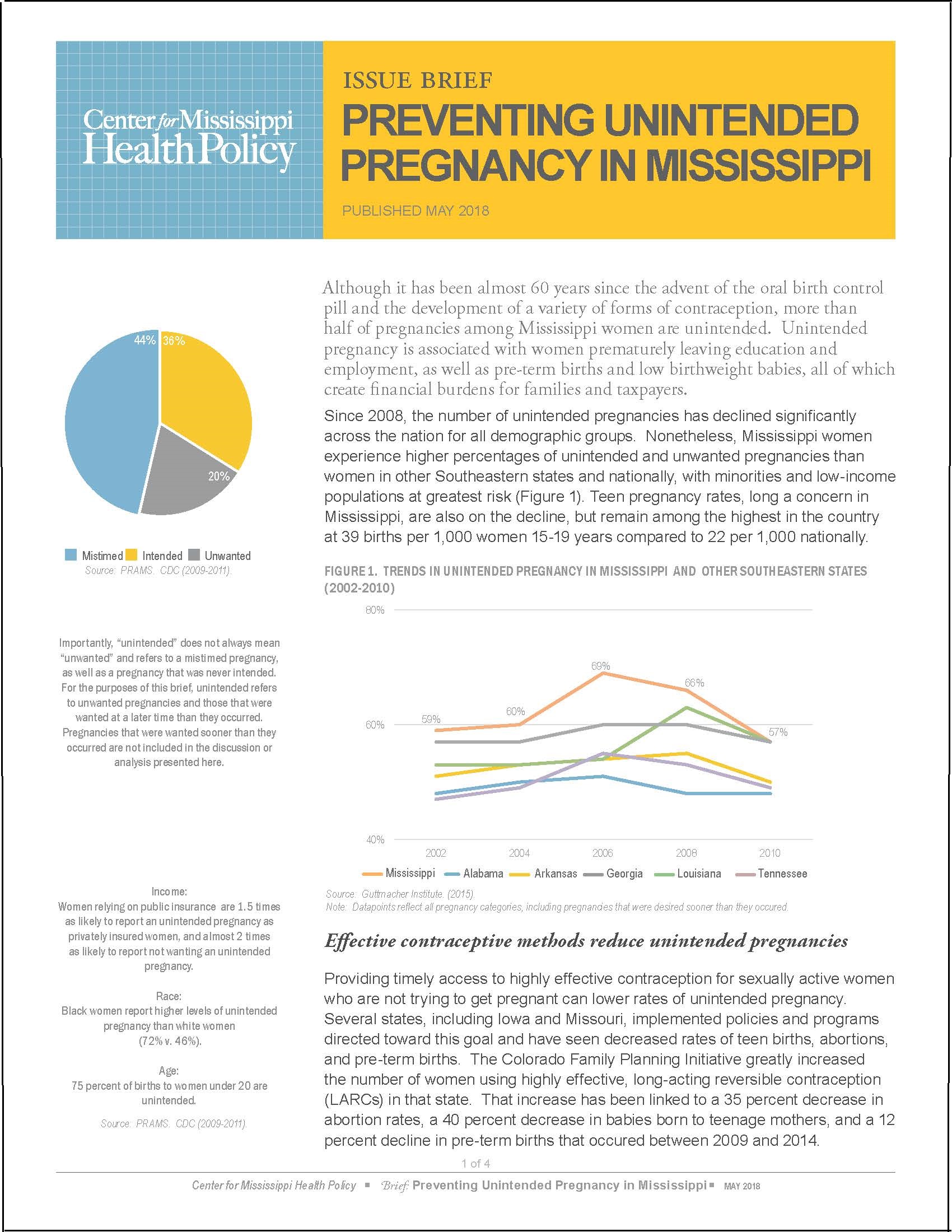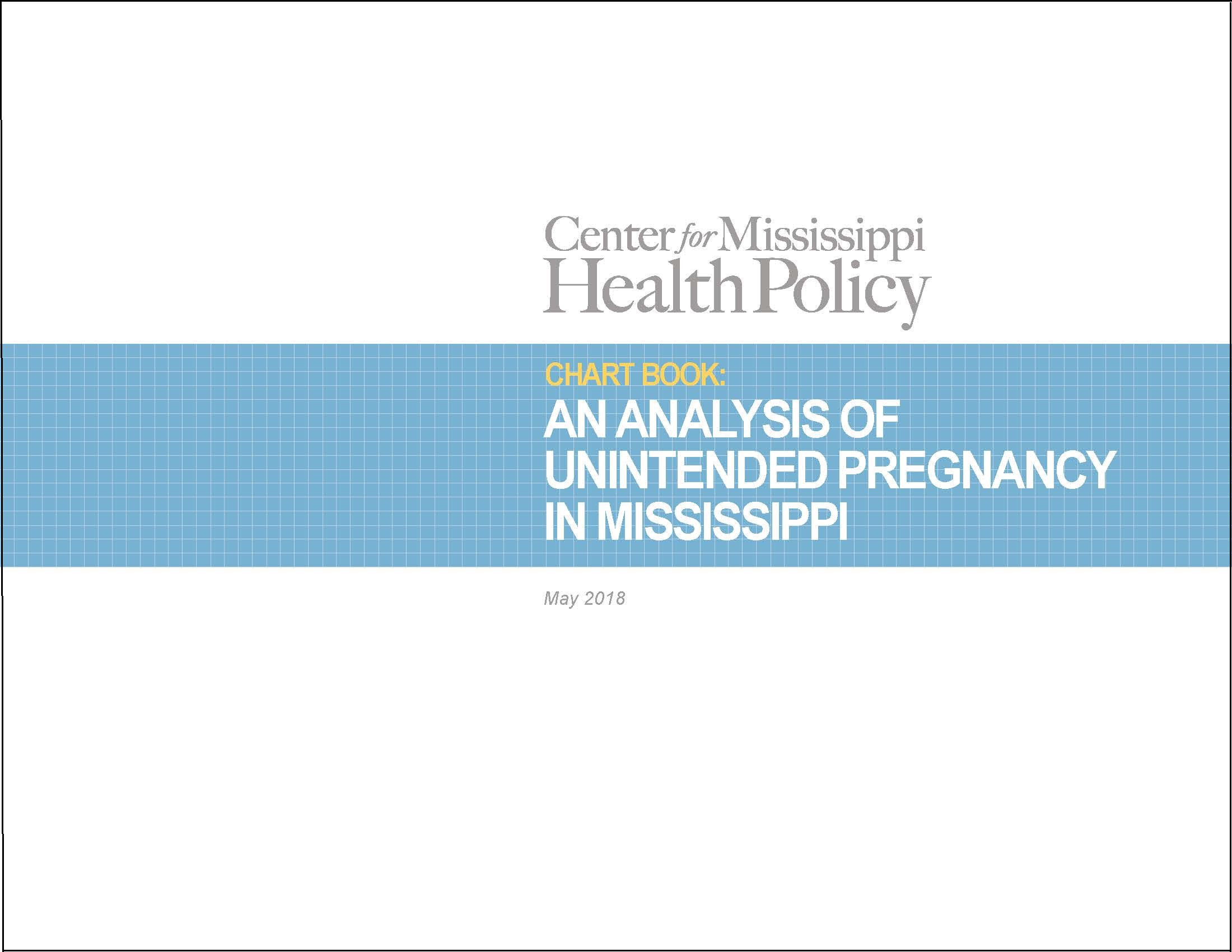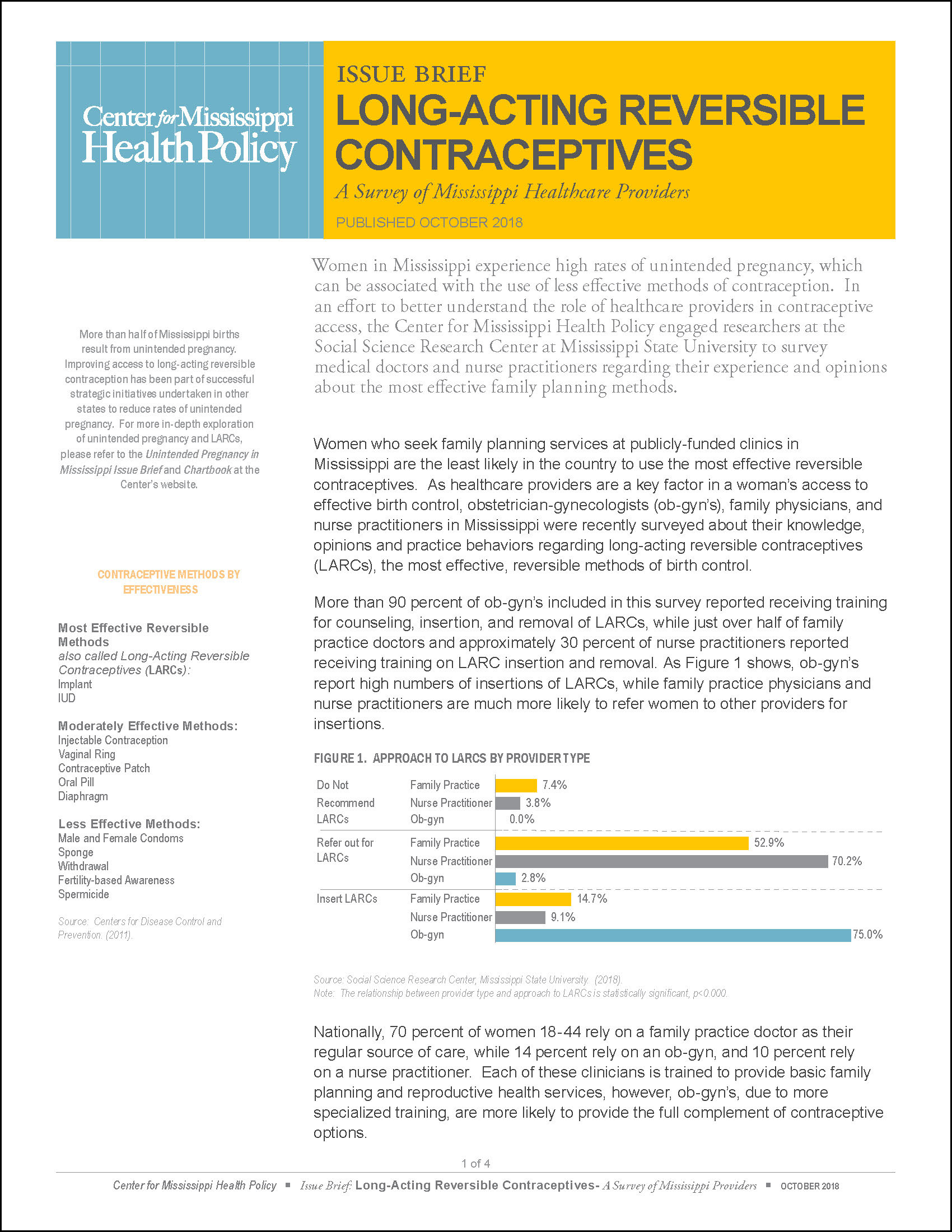Friday, May 17th, 2019
A Quick Look at Contraceptive Access in Mississippi
By Eden Blackwell
Women in Mississippi give birth to around 38,000 babies per year on average (though the number is declining in step with birth rates around the region and nation). As explained earlier in the Center’s Unintended Pregnancy in Mississippi issue brief, the state has a high rate of unintended pregnancy, and the majority of those are mistimed, meaning that a great many of the pregnancies that happen each year are occurring earlier than women planned. Implications for these unplanned pregnancies can include interrupted education, delayed careers, and financial hardship, which are all well-known factors in the cycle of poverty. The health impacts of an unintended pregnancy, which can be easily overlooked by those outside of the healthcare and public health fields, include birth complications for the mother and child, such as pre-term delivery or low birthweight. Mississippi has the highest rates of pre-term births and low birthweight babies in the country. Risk of these negative outcomes can be decreased if women can plan their pregnancy timing in order to stabilize any health conditions they may have or allow for longer intervals between consecutive births.
Birth control access is a critical element in supporting women as they make plans about their careers, education, and their health and the health of their children. Access to birth control in Mississippi (like access to many other health-related services) can vary depending on an individual’s personal circumstances. A mal-distribution of trained healthcare professionals and facilities that offer the full range of contraceptive methods and services may leave some low-resource Mississippians with fewer options for birth control. See the maps on the tabs below for a look at the distribution of publicly-funded clinics across the state that provide family planning and birth control services, as well as notable groups of women in need of the services these clinics provide.
To view on your mobile phone, click here.





